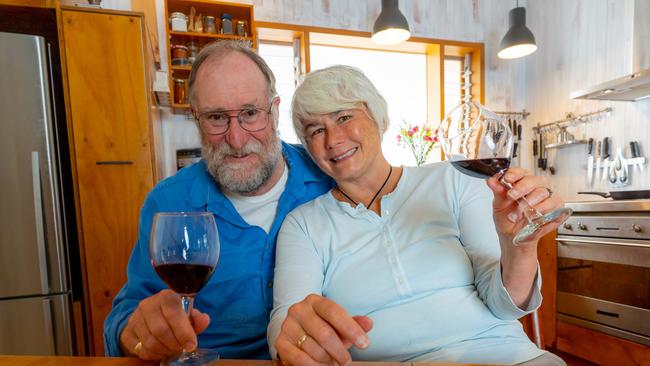100,000 teens will still be at home in their 40s
What type of household will you be in a generation from now? Living with kids or empty-nesting? Living alone, or, heaven forbid, still at home with mum and dad in your 40s? The Australian Bureau of Statistics has the answers.

Can you picture yourself a generation hence? Will you be living in a house full of kids, or will you be an empty nester? Will you be living alone? Will your children or grandchildren be in a land of white picket fences or living in a shared home?
Or will you be one of the more than 102,000 Australians aged 40 to 44 still living with your parents?
For those still lucky enough to be around in 2046, the Australian Bureau of Statistics has taken a generational look at our household and family composition.
The ABS offers some ballpark projections, including that lone-person households will be the fastest growing type of accommodation over the next generation, a product of people pairing up later in life and men dying before their wives. They are projected to grow by 44 per cent to 2046 compared to 35 per cent for family households, the Household and Family Projections, Australia report finds.
And despite the ageing population, couples with children will continue to be the most prevalent family type in 2046, at around 43 per cent of all families.
But male lone-parent families are the fastest growing family type, expected to increase by more than 50 per cent between now and 2046, albeit off a low base, compared to an overall increase in family groups of 35 per cent.
The report also explores the living arrangements of Australians in 2046 by age, noting that in the 30-44 age group most are projected to be living as a partner with children. The older people become within that cohort the more likely they are to be a partner with a child. But within this age cohort the ABS also projects that 435,000 people aged 30-44 will still be living with their parents in 2046, including 102,000 aged 40-44.
Those hitting 60-74 years old in 2046 will most likely be living as a partner, but without children in the house.
But by this age, living alone is the next most common arrangement, at one in five people. The likelihood of living alone increases within that age cohort, being greater for 70 to 74-year-olds than 60 to 64-year-olds, reflecting the death of partners. For those who will be 75 or older in 2046, life changes are likely to be more rapid. “People in this age group are projected to move from mainly living as a partner without children at ages 75–79 to mainly living alone at ages 85 years and over,” the report says.

It also notes the increased likelihood they may be living in a retirement home or residential aged care.
‘The likelihood of living in a non-private dwelling increases with age, from 2-3 per cent of 75–79 year olds to 14-23 per cent of people aged 85 years and over,” it says. Demographer Simon Kuestenmacher said the data showed sole-parent families are the fastest growing family type.
“It’s a recognition of the trend toward more family breakdown and divorce in the millennial generation,” he said.
A key data point with huge economic ramifications was that lone-person households are projected to take an increasing share of all households, he said.

“This is happening for two reasons. First, because older men die before their wives, and, second, because younger people are taking longer to partner up and so have a longer stint of life as a lone person.
“There are significant consequences in the housing market, for instance, where it is clear we will need a lot more dwellings and this can impact housing affordability.”
Mr Kuestenmacher said the data flagged the need for as many as 150,000 more dwellings each year over the next decade, about two-thirds of them for families.
“It flows into housing policy in terms of where homes can be built fastest and most economically to meet demand, and this is clearly on greenfield sites on the city fringes rather than trying to knock over and rebuild housing, which is much more expensive,” he said.
The ABS data also looked at where the household growth will be concentrated, noting that Melbourne’s growth in households will be the fastest between now and 2046, up by as much as 52 per cent through the addition of almost one million new households.
Regional South Australia is projected to be the slowest growing part of Australia, increasing by just 2-4 per cent by 2046.






To join the conversation, please log in. Don't have an account? Register
Join the conversation, you are commenting as Logout